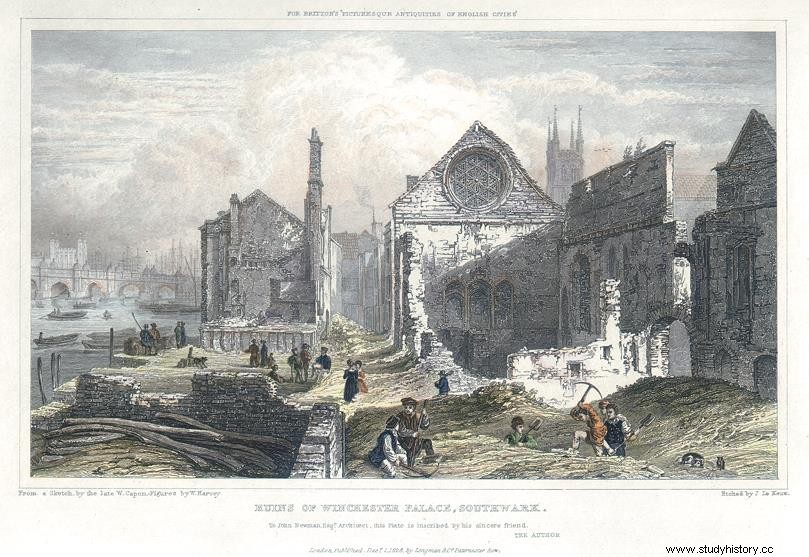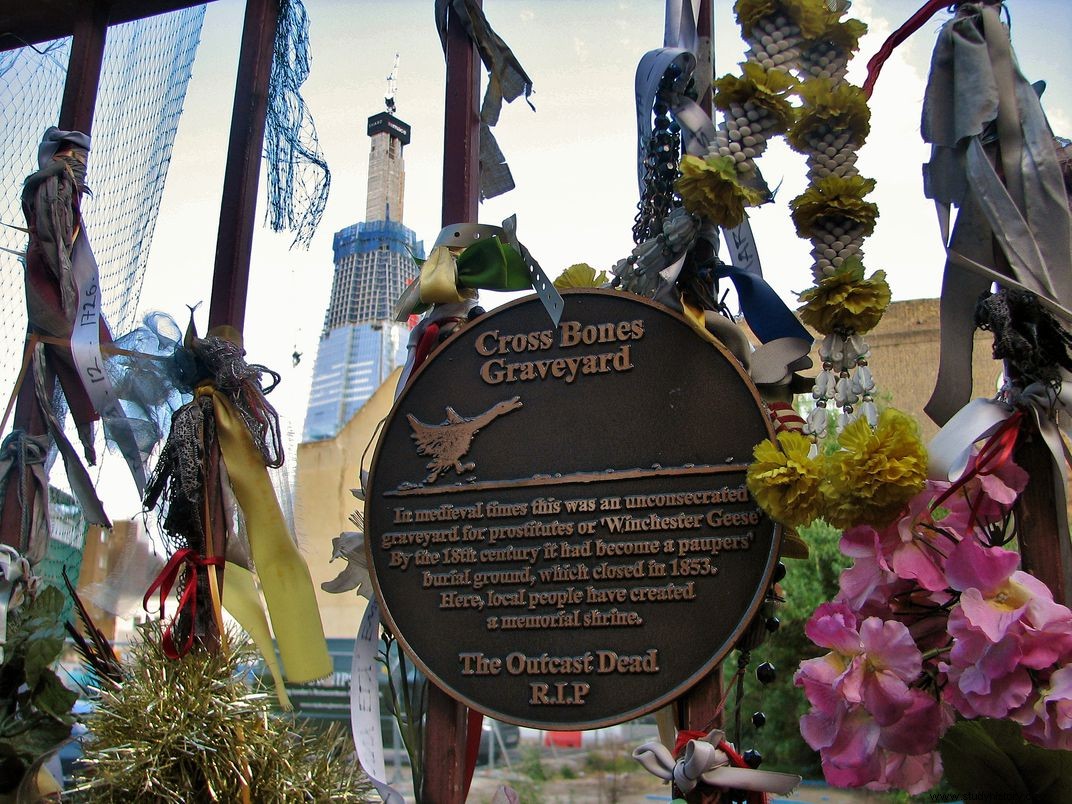During the Middle Ages, prostitution was subject to double standards:morally condemned by the Church and permitted by the State. So, depending on who occupied the throne of San Pedro (or the diocese) and the king in turn, it was more or less persecuted or more or less tolerated -depending on whether the glass is half full or half empty-. Even some leaders of the Church had their own opinion about it:
"Close the brothels and lust will invade everything." Saint Augustine.
"It must be allowed, because if we banned all the bad things we would lose too many good things." Saint Thomas Aquinas.
For what eyes that do not see..., it was normal for prostitution to be allowed but "hidden" in certain neighborhoods, where the best of each house came together. And in London it was taken out of the city and moved to Southwark, in the county of Surrey, on the south bank of the River Thames. This zone, which due to his permissiveness became known as Liberty , became a kind of Red Light District, where in addition to throwing a can into the air you could lose a few coins at the dice, bet on animal fights and enjoy street shows. Of course, you could also lose them because they robbed you around a corner, because as I was saying, there the crème de la crème was gathered . Crossing the bridge over the Thames or crossing the river by boat meant entering a world of sex, drugs and rock &roll. -«Everything that happens in Liberty, stays in Liberty «-. Neither the City of London nor the County of Surrey had any authority over Southwark, since the 11th century this area was under the jurisdiction of the Bishop of Winchester, one of the largest landowners in England and traditionally the King's Treasurer. When in 1129 Henry of Blois was appointed Bishop of Winchester, King Stephen, who was his brother for that, granted him more privileges, such as tax collection, and authorization for the construction of a palace -in what is now Clink Street-, which would be the residence of the bishop when he had to travel to London on matters of state. Logically, the bishop began to exercise the new powers transferred by filling his pockets with the fees charged to brothels, to prostitutes - the so-called Winchester Geese (The geese of the Bishop of Winchester) -, to taverns and other businesses, as well as the fines imposed by the courts. The Bishop of Winchester was the capo of Liberty.

Seeing that this was medieval Sodom and Gomorrah, in 1161 Stephen's successor, Henry II, enacted 39 rules to bring order to that chaos, known as the "Bathhouse Ordinances - a euphemism for brothels - of Southwark under the direction of the Bishop of Winchester «. For example, regarding the prostitutes:they had to register with the bishop's officials, they could enter and leave the brothels whenever they wanted -an official would regularly visit the brothels to check that they were not locked up and thus avoid slavery-, they could not work on days religious holidays or dragging their clients from the street pulling their clothes, the figure of the pimp was also prohibited; and with regard to brothels:they could not have married women, nuns, pregnant women or women with the "burning disease" (gonorrhea or syphilis) working, they could not lock up clients for not paying -they had to report it to the bishop-, it was regulated what the prostitutes paid to use the rooms, they could not sell food or drink -so as not to compete with other businesses-... and so on up to 39. Logically, the breach of these rules implied sanctions such as fines, which also went to the coffers of the bishop , or prison. In 1587, The Rose opened , the first theater in Southwark, where Christopher Marlowe and William Shakespeare premiered their plays.

And despite the fact that the prelate was profiting from prostitution - ironies of life - when one of the geese died in Liberty the bishop forbade them to be buried in consecrated ground (cemetery). So, those "unworthy" women were buried in a common grave, in an unconsecrated place, along with other people whom the society of that time considered to be a bad life. That place, officially called Cross Bones (crossbones) and popularly known as «Single Cemetery »-another euphemism for prostitutes-was frequently visited by grave robbers who dug up corpses to sell to medical students. Saturated with corpses, it was closed in 1853. In the 1990s, during the excavations carried out for the expansion of the subway, 148 skeletons came to light in the upper layers, it being estimated that some 15,000 people may have been buried there. After examining the skeletal remains, it was discovered that they were mostly fetuses, newborns, children under one year of age and women, many of them suffering from syphilis. That place was the cemetery of the forgotten.
Today, the group known as the Friends of Cross Bones , headed by the poet John Constable , fight to prevent Cross Brones Graveyard from become an office building and remain as a garden of reflection and a symbol to remember those set apart and forgotten by society.


